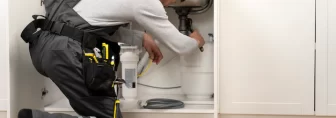The Expert’s Guide To Rodent Control: Key Steps For Pest Management

Imagine a quiet evening in your cozy home, disturbed by the faint scuttling of tiny feet. Rodents have invaded your sanctuary, and it’s time to take action. Rodent infestations can be a persistent and frustrating problem for homeowners. Still, with the proper knowledge and approach, you can regain control of your living space or seek help from a professional rodent control service. In this expert guide to rodent control, you will explore critical steps and strategies to manage and prevent rodent infestations effectively.
1. Identify The Culprits
Before launching into pest management, it’s essential to identify the type of rodents infesting your property. Common culprits include mice and rats. Both can cause damage to your home, contaminate food, and carry diseases. Differentiating between them is crucial because their habits and preferences may vary. For example, mice are smaller and tend to be more curious, while rats are larger and often more cautious.
2. Locate Entry Points
Rodents are crafty when it comes to finding their way indoors. To effectively control them, identify and seal any potential entry points. These can include gaps in doors, windows, vents, and cracks in your home’s foundation. Remember that mice can squeeze through openings as small as a dime, so thorough inspection is essential. Use materials like steel wool, caulk, and weatherstripping to block these entryways, denying rodents access.
3. Implement Sanitation Practices
Rodents are attracted to food sources and shelter. To make your property less appealing to them, maintain proper sanitation. Store food in airtight boxes, clean up spills promptly, and dispose of trash in sealed bins. Keep your outdoor areas tidy as well, as overgrown vegetation and clutter can provide hiding spots for rodents. Removing these attractions makes your home less inviting to unwelcome guests.
4. Set Traps Effectively
Trapping is a standard method for rodent control. Choose traps based on the type of rodents you’re dealing with and place them strategically. Use snap traps or live traps baited with peanut butter or cheese for mice. Rats may require larger, more robust traps. Place traps near their known travel routes, which are often along walls, and check them regularly. When handling traps, wear gloves to avoid leaving human scent, which can deter rodents.
5. Consider Rodenticides
In some cases, rodenticides may be necessary to control a large-scale infestation. These chemical treatments are designed to poison rodents, but they should be used with caution. Keep them out of reach of children and pets and follow the manufacturer’s instructions carefully. Rodenticides should only be used as a last resort when other methods have proven ineffective.
6. Maintain Vigilance
Even if you successfully eliminate a rodent infestation, it’s essential to remain vigilant. Rodents can return, especially if they find your home attractive. Periodically inspect your property for signs of new entry points or rodent activity. Consistently practice good sanitation habits to deter them from returning. An ongoing commitment to pest management is the key to long-term success. One can also seek help from a professional rodent control service.
Conclusion
Rodent control can be challenging, but armed with the knowledge and strategies outlined in this expert’s guide, you can effectively manage and prevent infestations. Remember to identify the specific rodents you’re dealing with, seal entry points, maintain proper sanitation, use traps and rodenticides wisely, and stay vigilant. By following these key steps, you can protect your home and enjoy a pest-free environment. Don’t let rodents disrupt your peace and comfort—take action today to regain control of your living space.
Read Also:


























